Cheongju Craft Biennale stresses connection with nature, Jikji legacy
By Park YunaPublished : Oct. 9, 2023 - 20:38
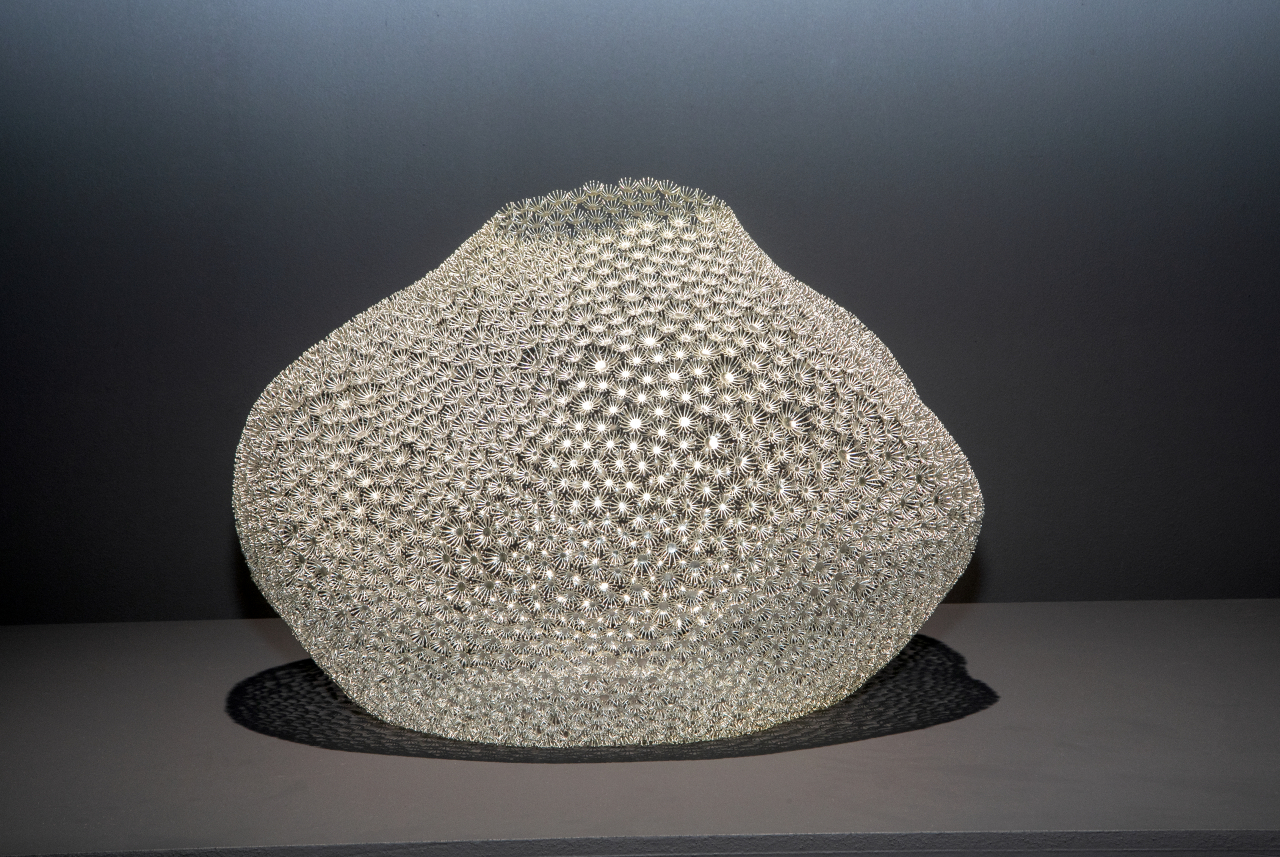
CHEONGJU, North Chungcheong Province – Cheongju, the largest city in North Chungcheong Province, 137 kilometers south of Seoul, is home to the world’s oldest metal-printed book Jikji. Acknowledged by UNESCO, Jikji was created in 1377 during the Goryeo Kingdom (918-1392) at Heungdeok Temple in the city.
Cheongju Craft Biennale was launched in 1999 to succeed the legacy of Jikji, or Jikji Simche Yojeol, that preceded Europe’s Gutenberg Bible in 1455, in dedication to the craftsmanship of artists across the world.
The 13th edition of the biennale kicked off Sept. 1 under the theme of “The Geography of Objects” at the Culture Factory, a 51,000-square-meter building. The building, established in 1946, was used as a tobacco factory right after Korea's liberation from the Japanese.
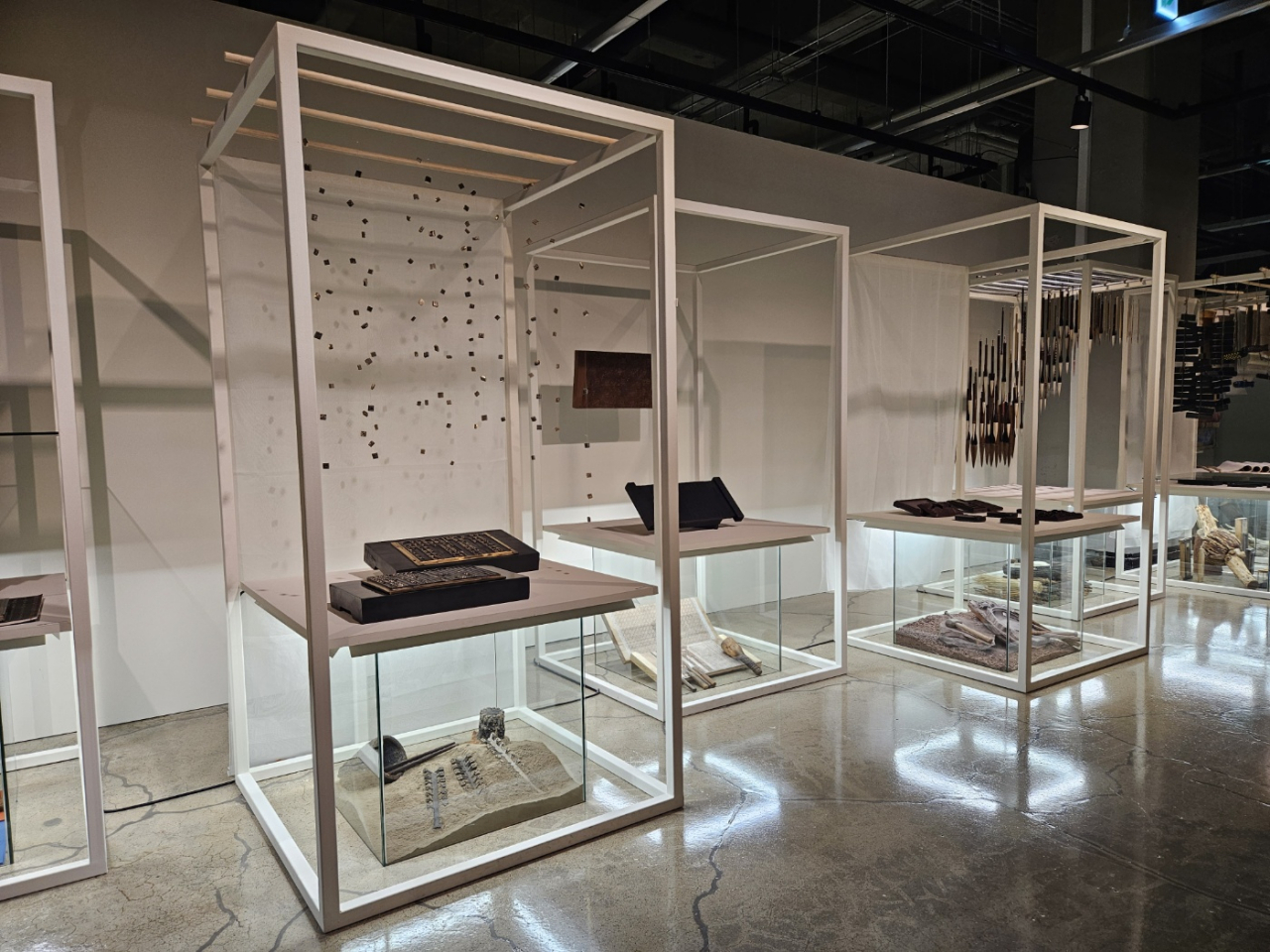
After the cigarette factory shut down in 2004, the place was revamped into a mecca of cultural activities in the city, becoming the main exhibition hall for the country’s largest and oldest craft biennale since 2011.
“The biennale has helped shape the cultural brand of the city for the past 24 years, highlighting the history of Jikji,” artistic director Kang Jae-young told The Korea Herald on Thursday in Cheongju.
Kang brought up the concept of "biophilia," a term coined by Harvard naturalist Dr. Edward O. Wilson to describe the idea that humans possess an innate tendency to “seek connections with nature and other forms of life.”
The biennale was joined by 251 craft artists and collectives from 57 countries. The biennale also accompanies the “Invited Country Exhibition” that features Spanish craftsmanship this year.
“I wanted to expand people’s perception of craft works beyond tools, by bringing up the concept of biophilia to lead to a thought that craftsmanship also includes interaction with nature. Creating craft works is highly influenced by the climate or cultural environment of the region that the creator is based in,” Kang said.
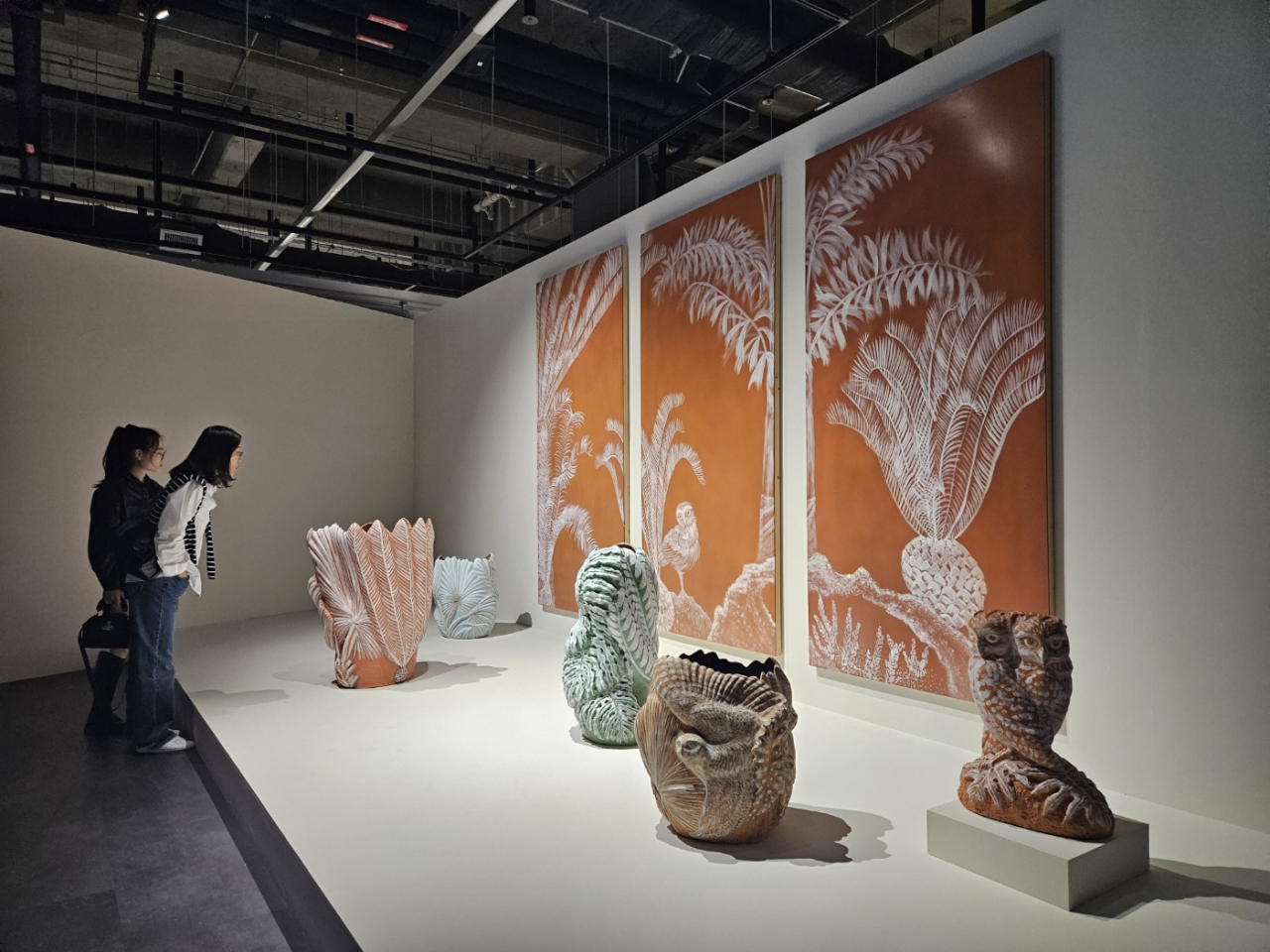
The main exhibition shows craftsmanship from different cultures starting with the subtheme of “Biophilia, Beyond Humanism.” Los Angeles-based Kim Myung-jin depicts primitive landscapes inspired by the artist’s garden filled with ancient plants, rare species and endangered varieties.
Kim’s ceramic works with terracotta clay take center stage at the exhibition hall, created with the oldest ceramic-making method, coiling. Kim also takes inspiration from Korean "minhwa," folk paintings that prevailed in the late Joseon era (1392-1910). Her combination of traditional Korean culture and ancient plants give an exotic atmosphere.
Next to Kim’s works is Japanese artist Takahashi Haruki’s “Garden of Subterranean Water," in which porcelain vines swirl and spread out midair, suspended on wires. Reminiscent of ripples on water, the delicateness of the installation evokes a feeling of awe in the audience.
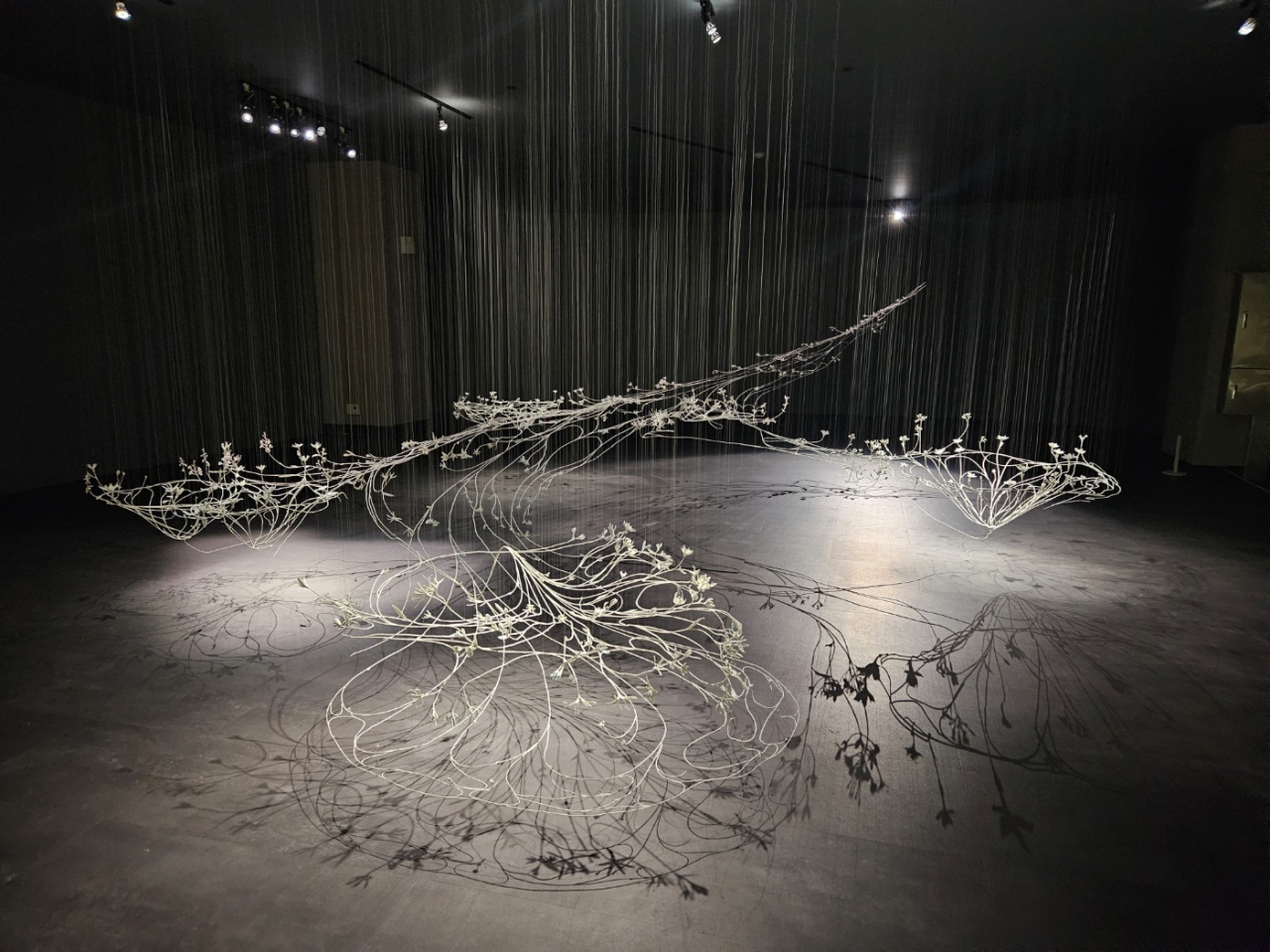
Passing through the garden-inspired pieces, Taiwanese craft artist Deng Wenjen’s tapestry works are on display at the second section subthemed “Meme & Cultural Contexts.” Her tapestry work depicts the history of Taiwan, reflecting her own Indigenous ancestry and interest in the island's Indigenous history and mythology.
Ghanaian artist Anthony Amoako-Attah also seeks to deliver a sense of identity through his glass works. His glass pieces express the colors and patterns of traditional Ghanaian textiles, such as handwoven Kente designs, and Adinkra symbols used in Akan culture.

Korean craft artist Lee Yeh-rim cherishes the legacy of Korean craftsmanship, interpreting the traditional Onggi coiling method in a contemporary way after learning the technique from her father Lee Kang-hyo, a globally renowned Onggi potter. Lee describes her work as an exploration of "luxury and decadence" with ceramic surfaces that "crystallize, facet, fragment, blur and cause noise."
On the wall are eight-panel folding screens of embroidery collected by textile artist Chang Young-ran who has collected more than 1,000 embroidery artifacts over the past 30 years. Chang’s most cherished folding screen, “Screens of Magpie and Tiger” from the late Joseon era, features an embroidered tiger and magpie.
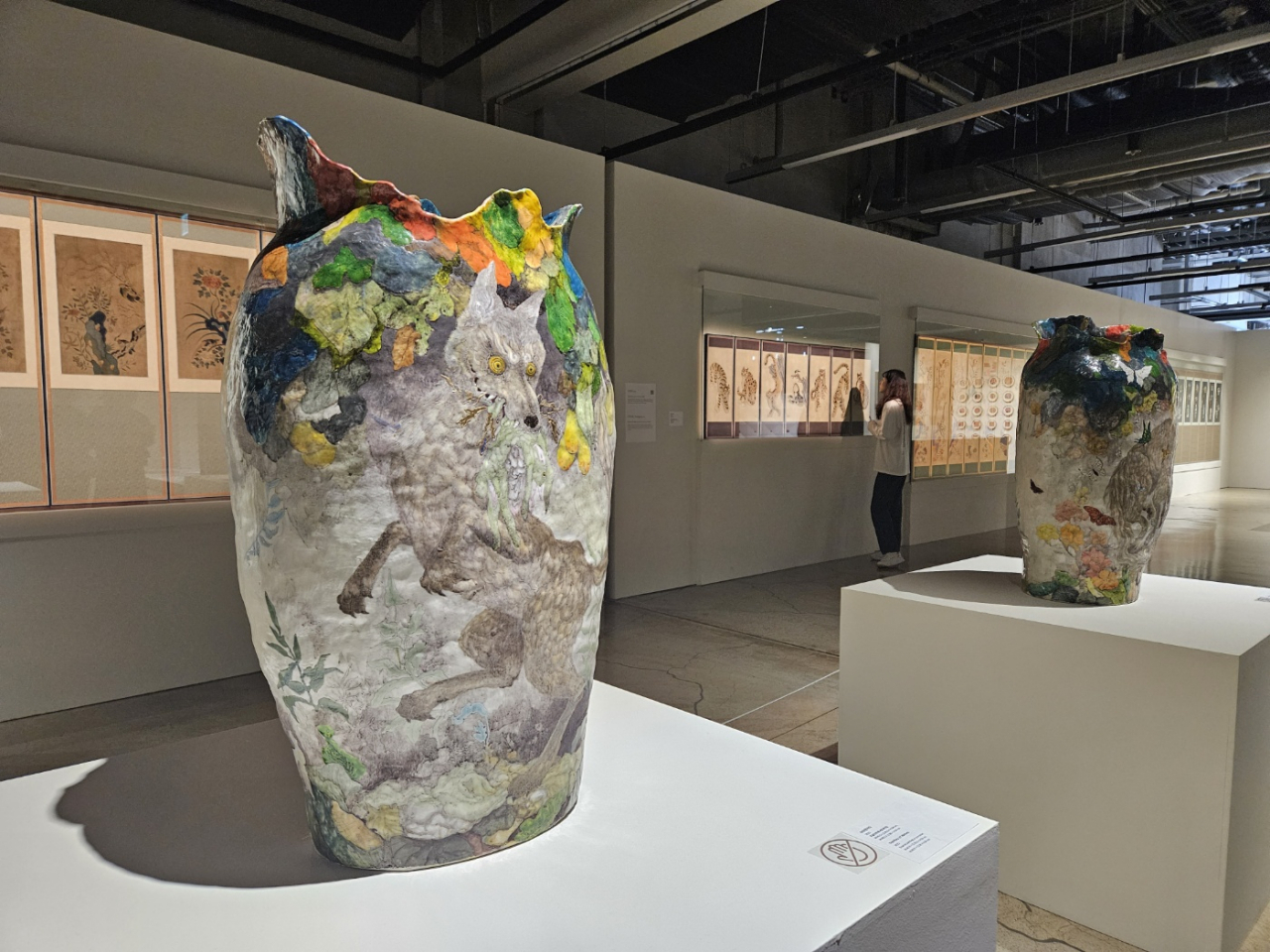
Displayed in front of the folding screens are Japanese artist Muta Yoka’s colorful ceramic vessels with painted wolves. In Japan, wolves are thought to have become extinct around 1900, according to the artist. Muta's works are based on the ceramic art of Kutani-yaki, a unique colorful painting style of Japanese porcelain that originated in the city of Kaga in Ishikawa prefecture. Her free-flowing painting technique of imaginary animals such as dragons on pottery evoke a fantastical scene.
At the third section “Hybrid & New Craftsmanship,” the exhibition casts a question on the process of creating craft works when technology like 3D printing and artificial intelligence continues to evolve.
UK-based potter and artist Jonathan Keep uses 3D printing technology to visualize mathematical concepts from nature, such as the golden ratio. The shapes of his pots are generated in computer code.
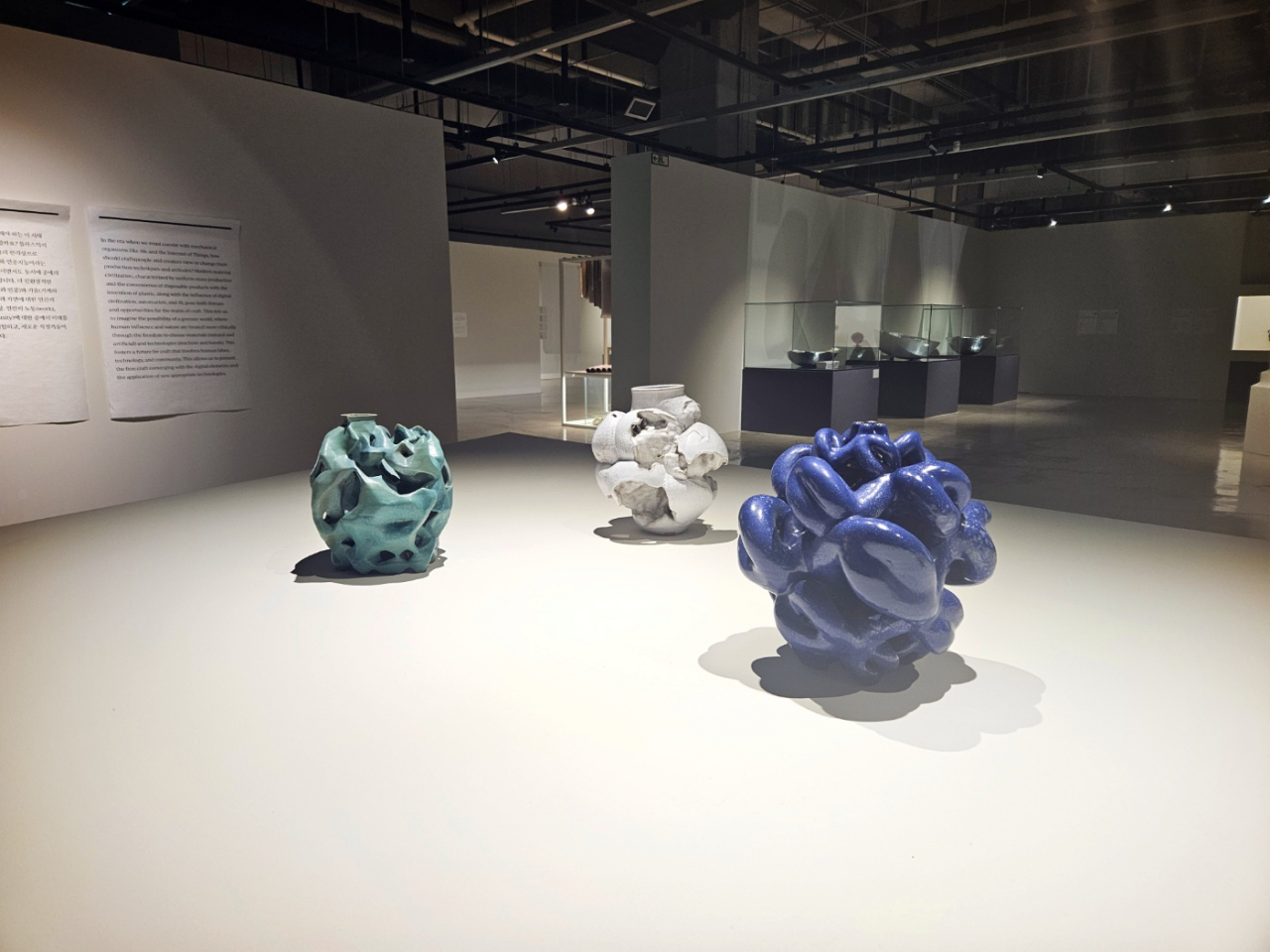
"The range of craftsmanship is quite wide, which has been continually debated. Now we are living in the tech-heavy society, and it is worth thinking over crafts works created with cutting-edge technology today. I am the type of person who takes a wide perspective when it comes to craft works," Kang, the artistic director, said.
Kang pointed out that although craft works are created with hands, humans have used equipment to create them.
The grand prize winner of the Cheongju International Craft Competition went to metal craftsman Ko Hye-jeong's “The Wishes,” a vase made of brass and silver plating. Ko was given 60 million won ($44,000) in prize money.
The 45-day craft biennial runs through Oct. 15.











![[Kim So-hyun] The quiet taxi driver from Paris](http://res.heraldm.com/phpwas/restmb_idxmake.php?idx=644&simg=/content/image/2024/04/25/20240425050891_0.jpg&u=)







